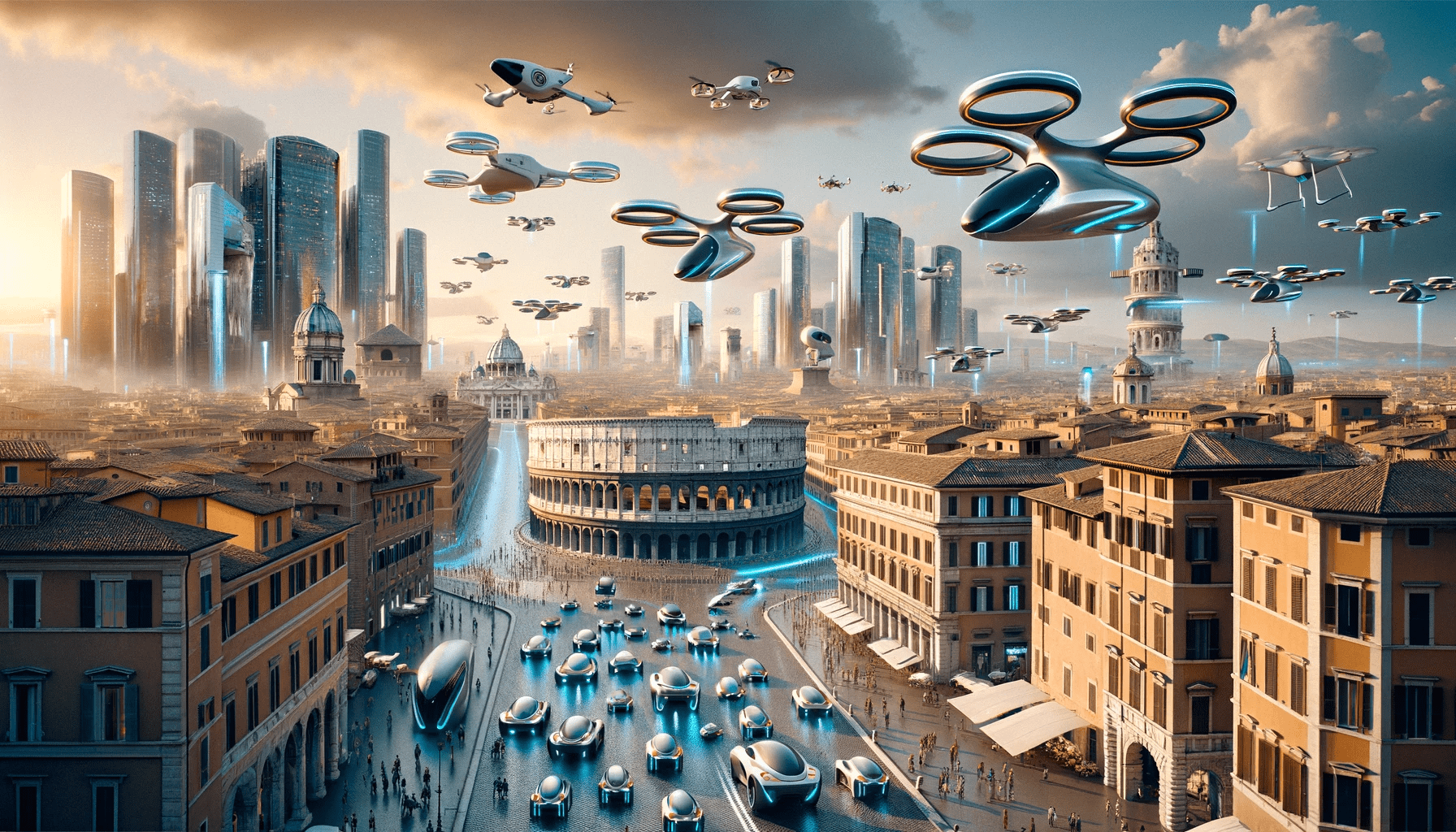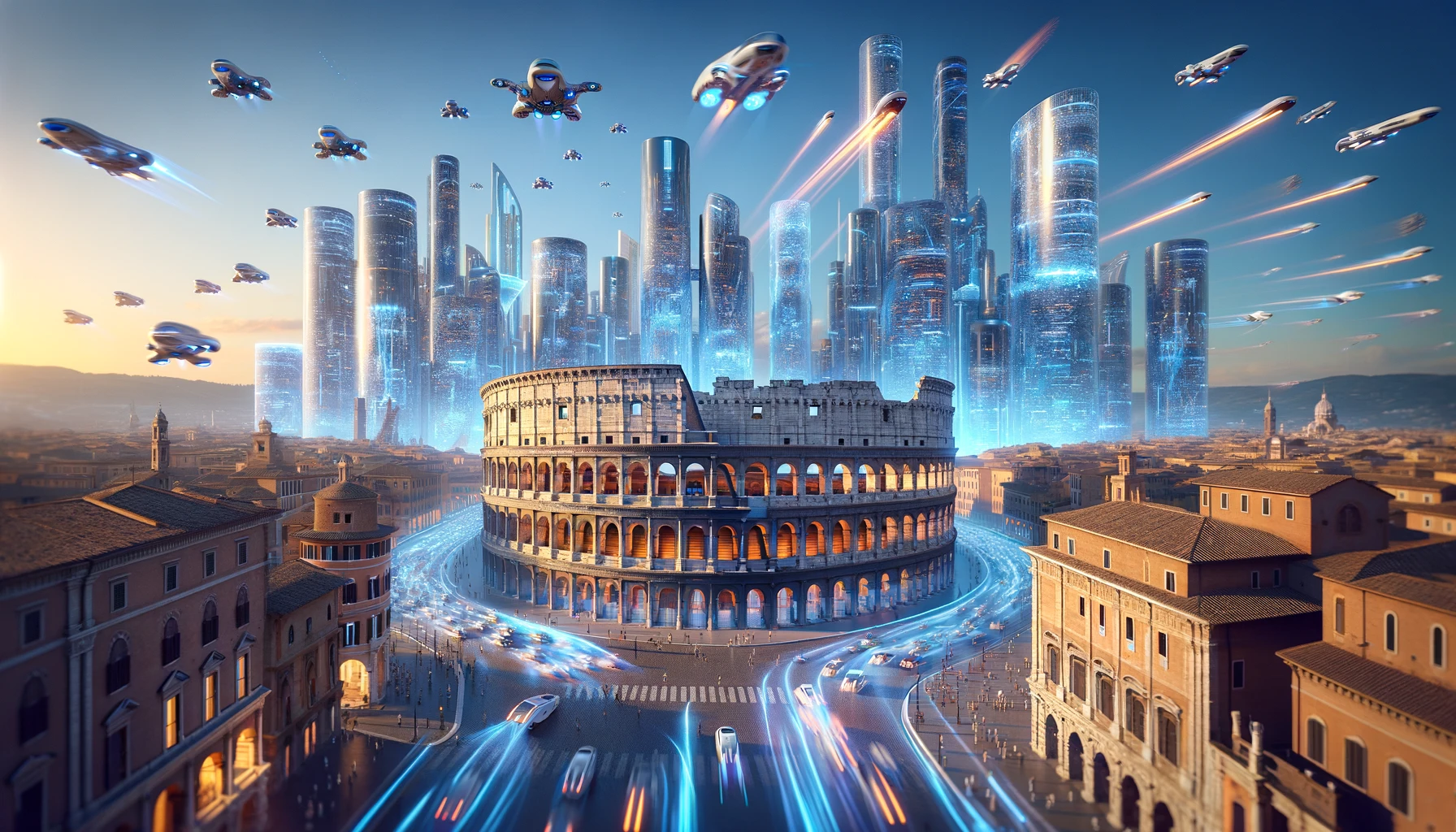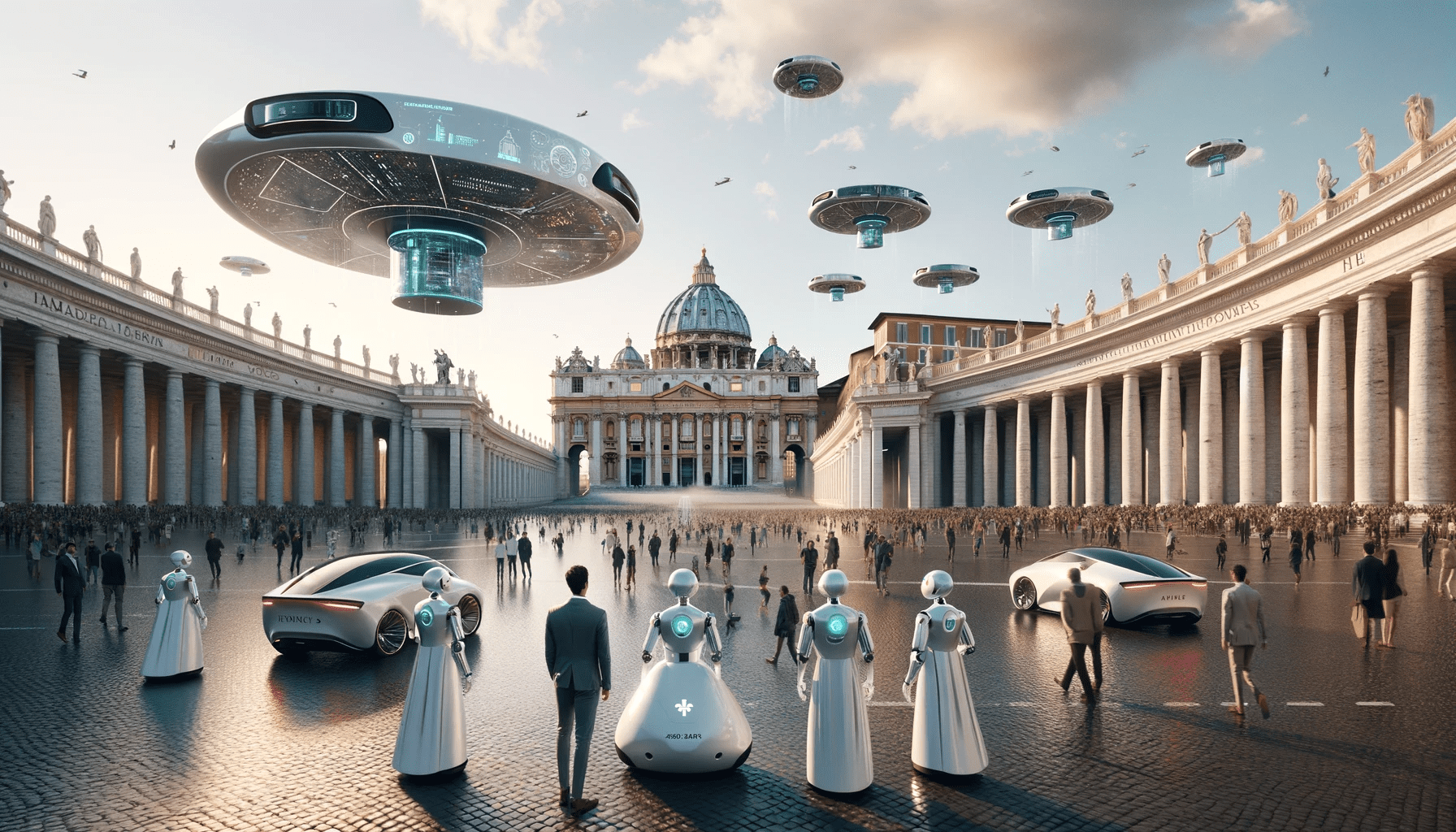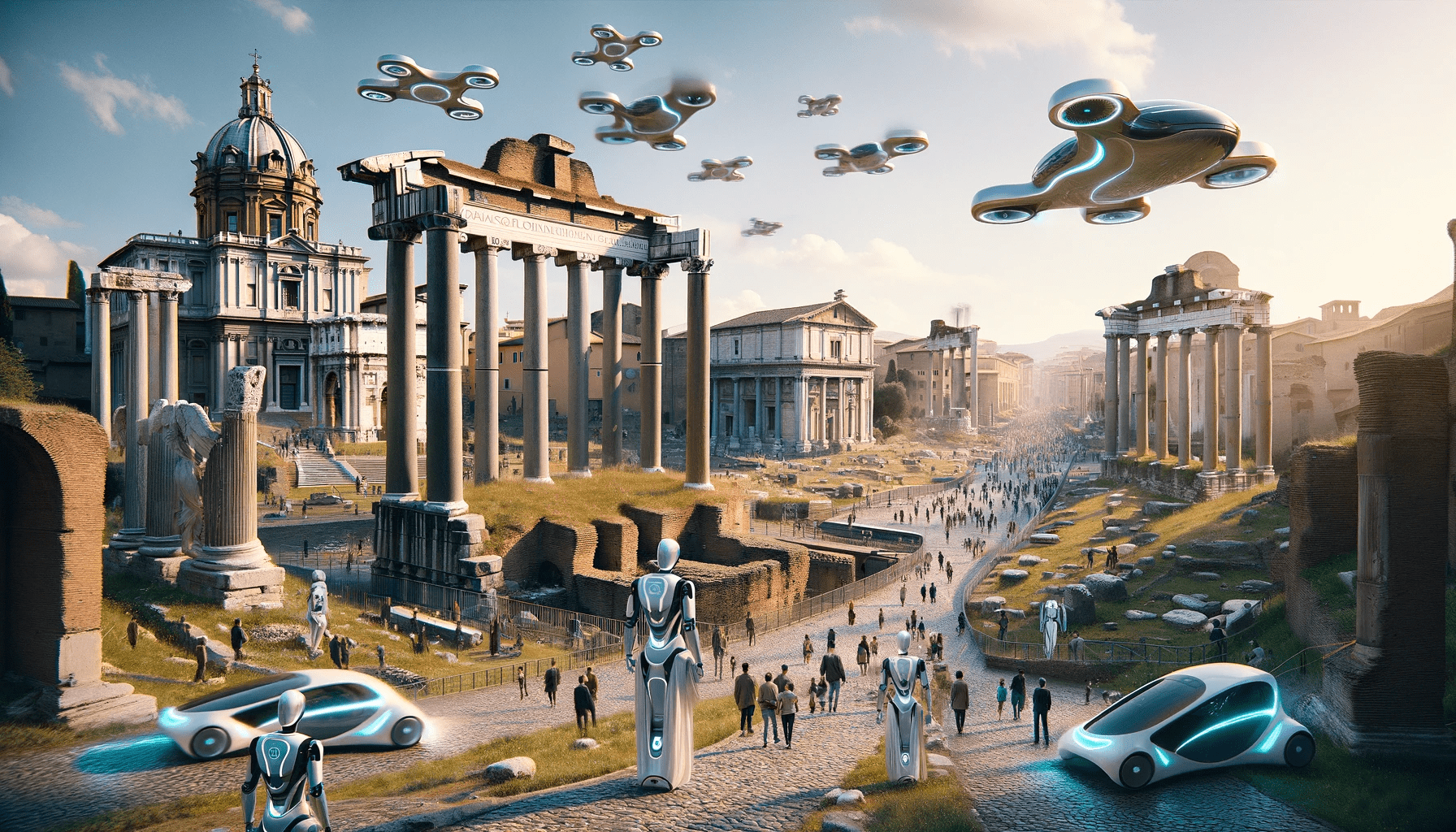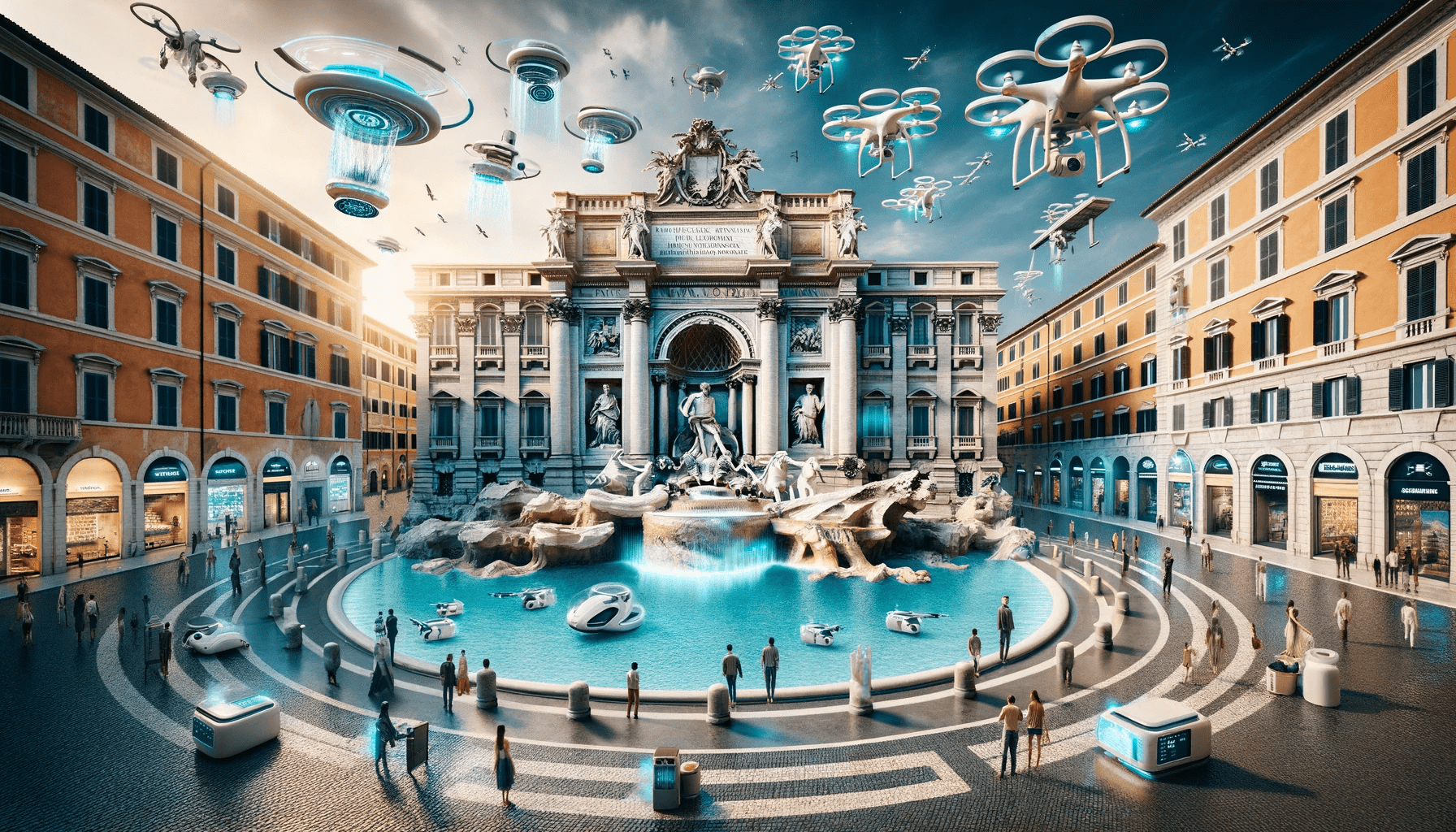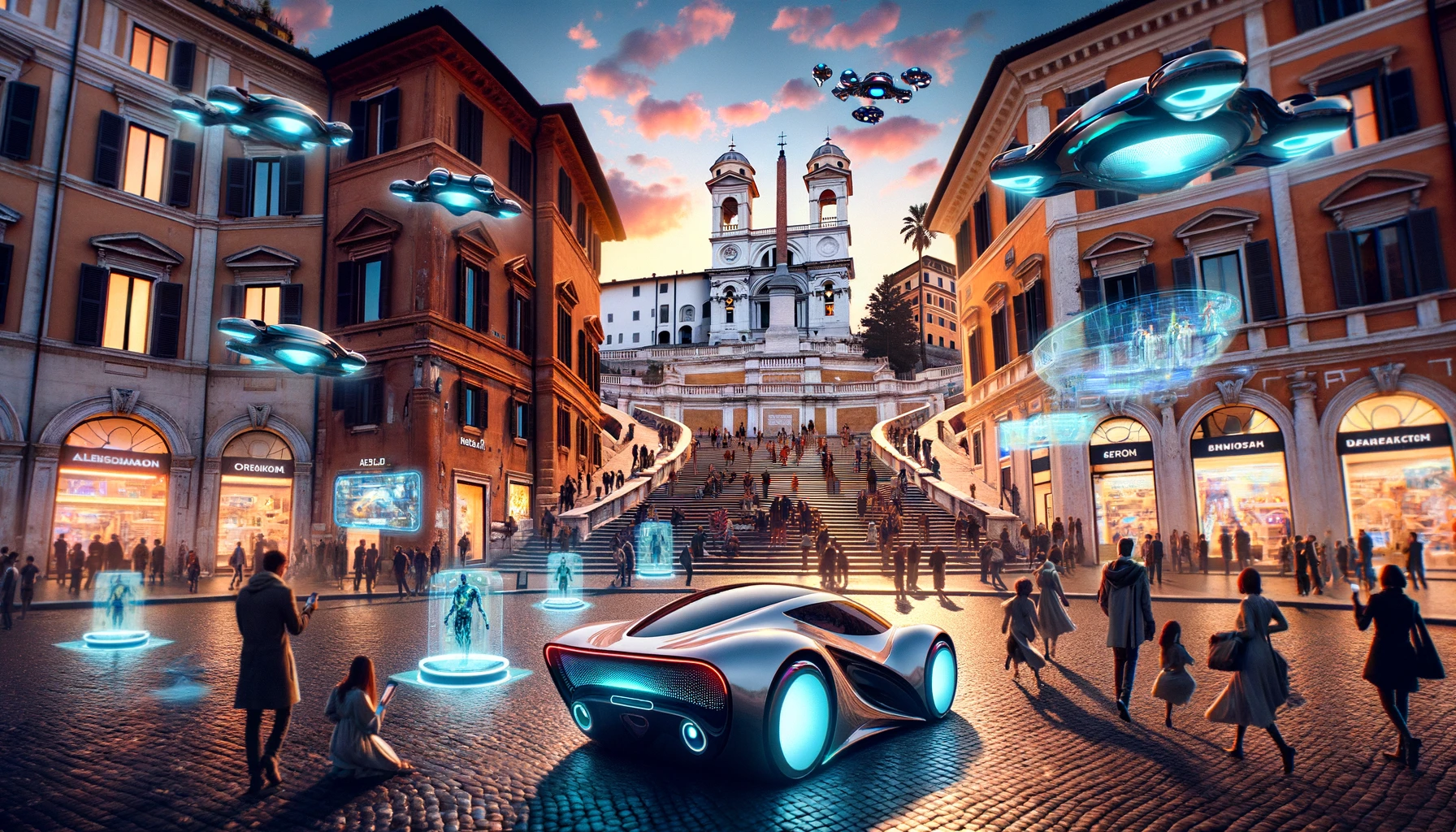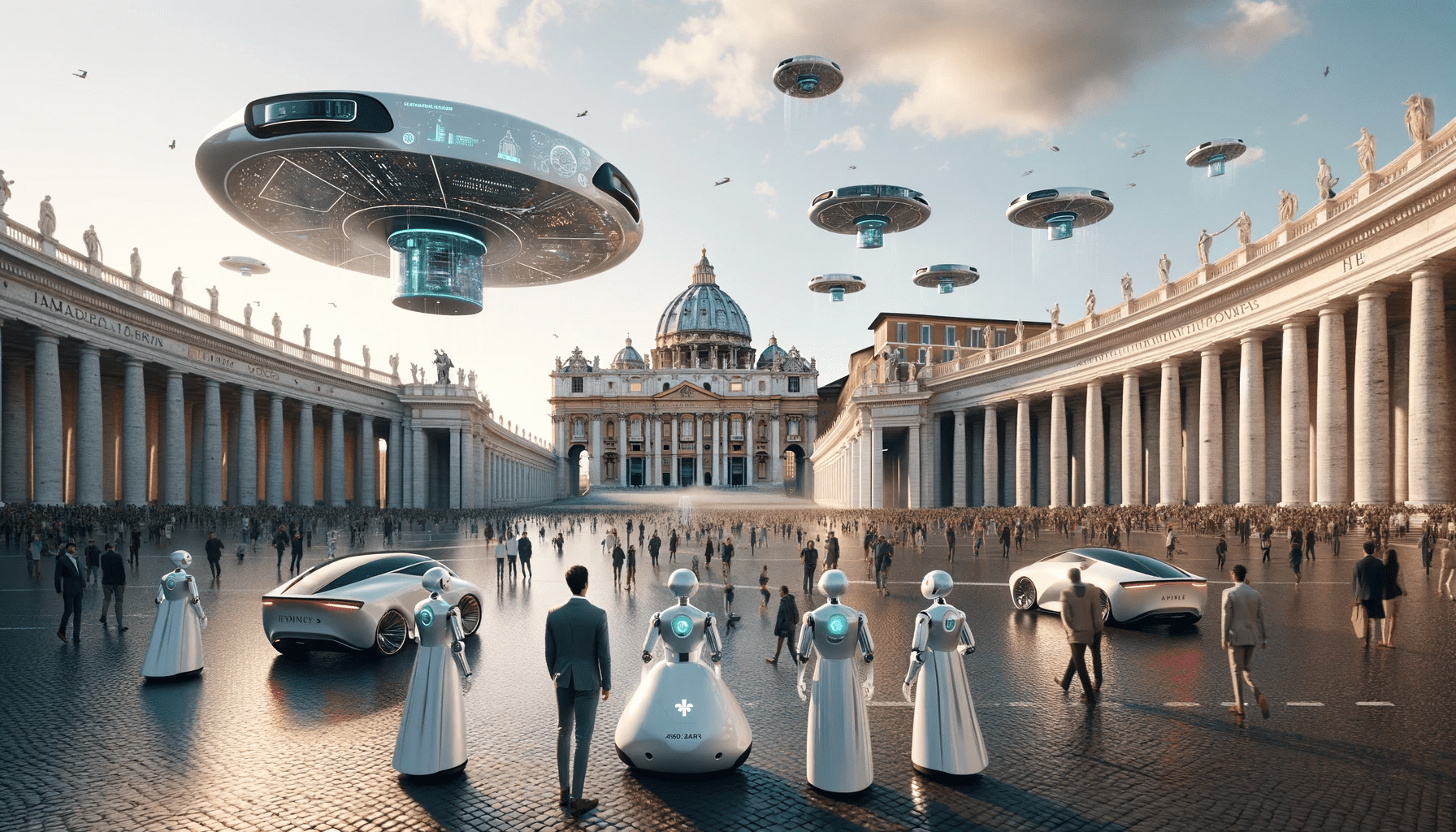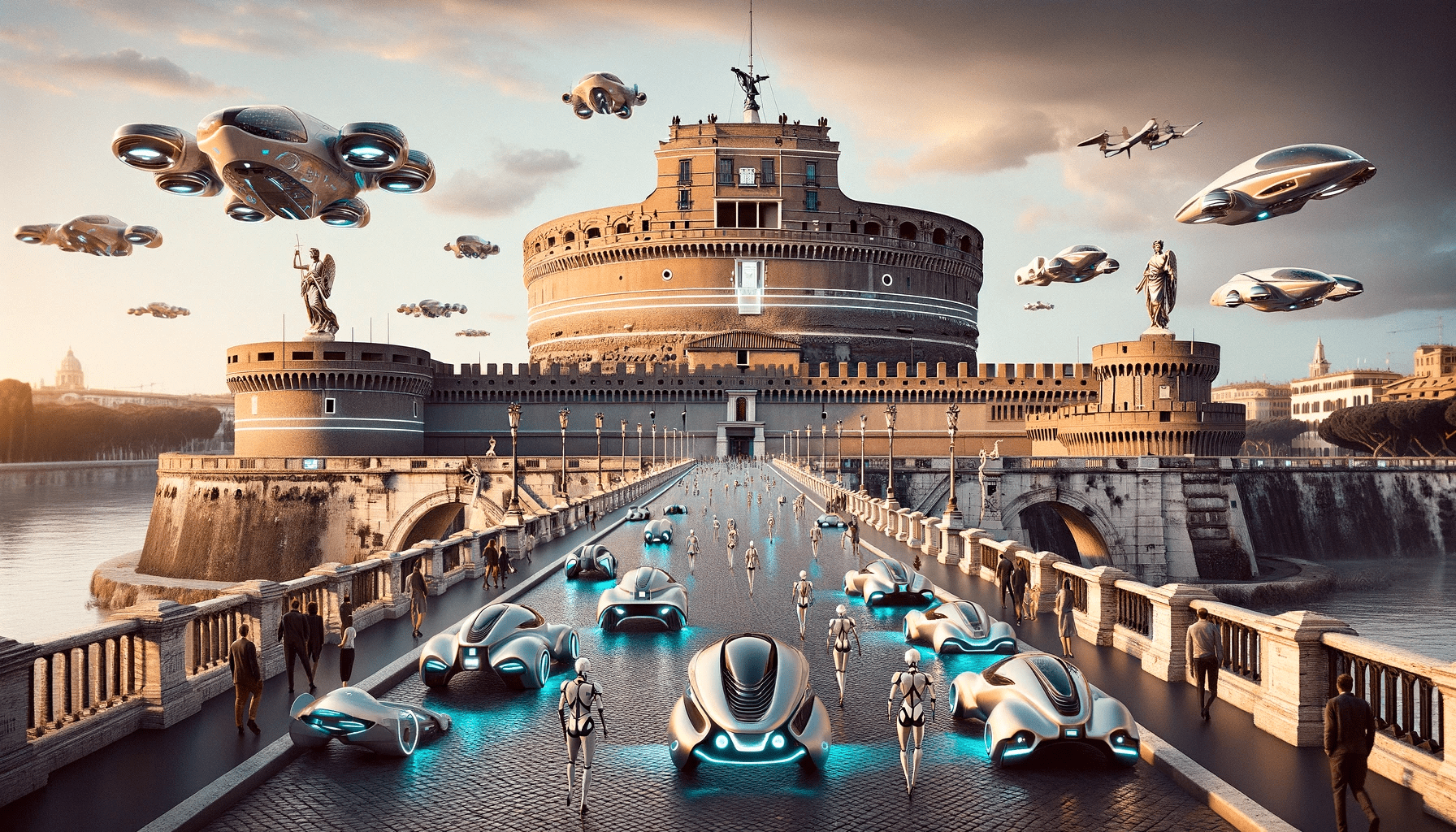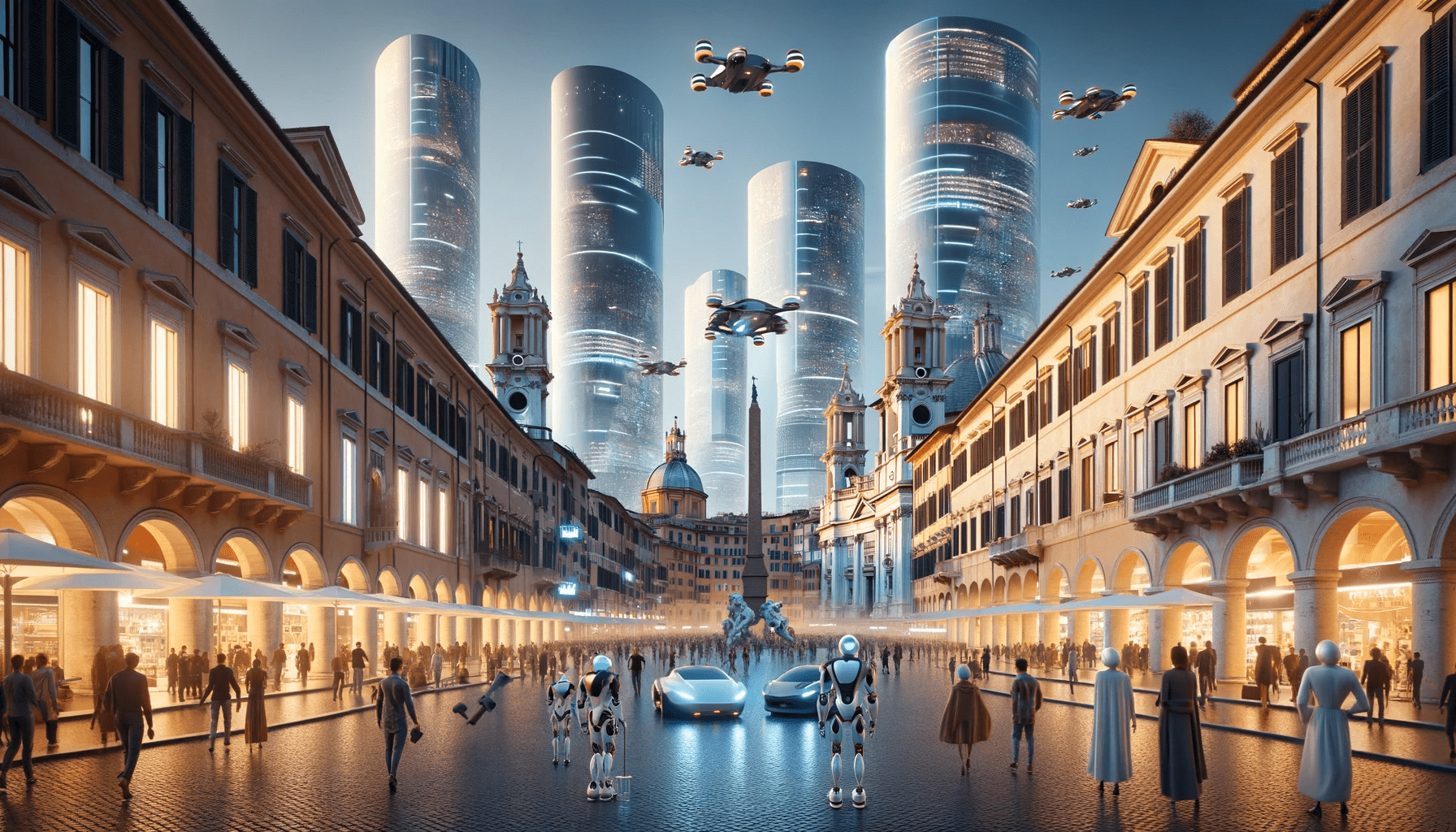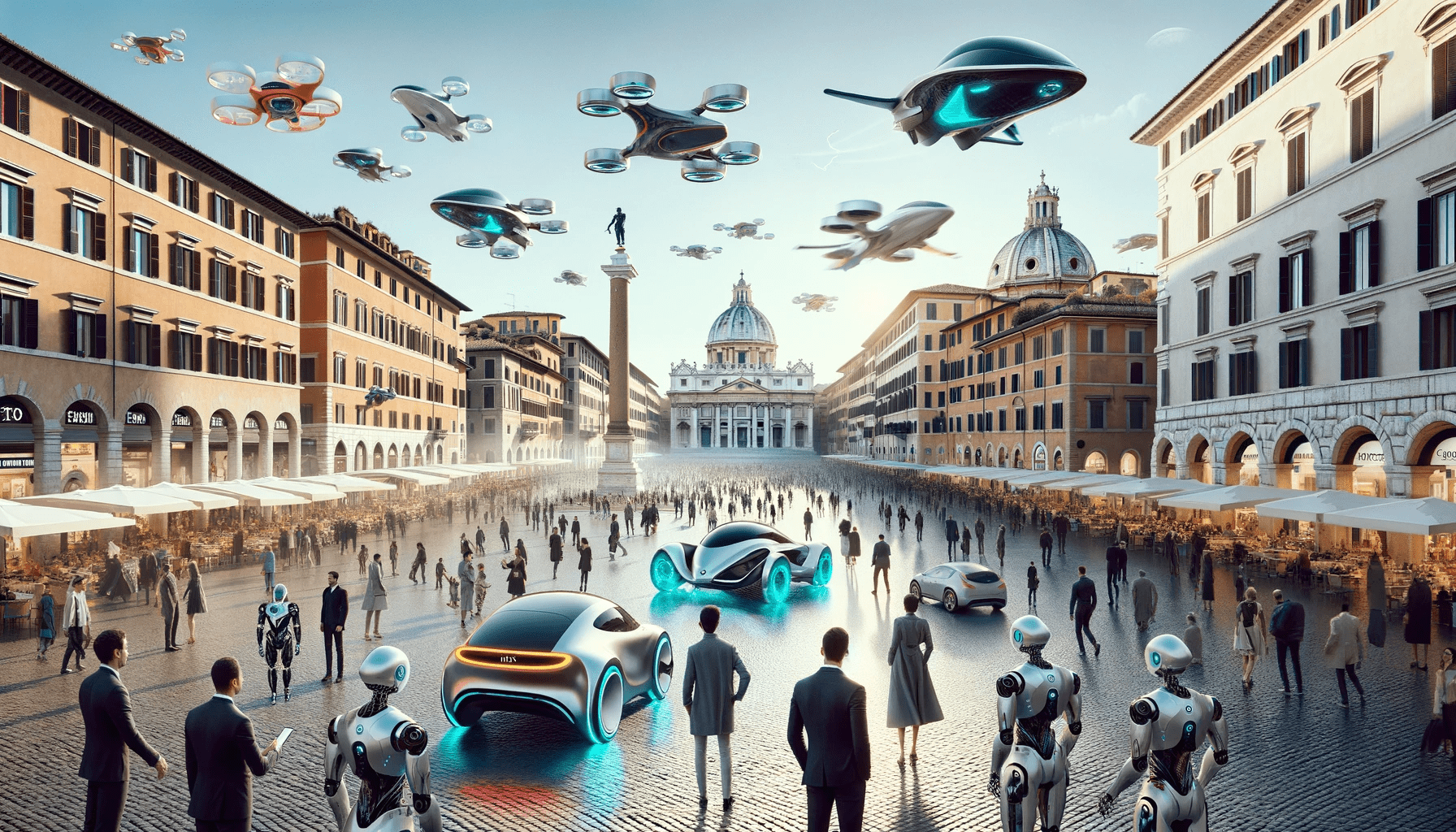Imagine the eternal city of Rome as the calendar turns to 2100. This is a place where history and the future merge seamlessly, creating a landscape that celebrates its rich past while embracing the marvels of technology. Picture Rome with its iconic landmarks, now standing amidst robots, flying cars, AI-driven amenities, and towering new skyscrapers that offer a stark yet harmonious contrast to its golden historical buildings.
Rome in 2100 will be A Fusion of Ancient Glory and Futuristic Innovation!
Futuristic Rome’s Top 10 Landmarks and Their Transformation
- The Colosseum: Standing tall with its ancient grandeur, the Colosseum now hosts virtual reality experiences, allowing visitors to witness historical events in immersive 3D.

- St. Peter’s Basilica: This sacred site is augmented with holographic displays that narrate its history, while AI-guided tours provide in-depth insights into its architectural marvels.

- The Pantheon: The Pantheon, preserved in its majestic form, now features an interactive AI dome that projects the night sky as seen throughout different eras.

- The Roman Forum: Once the heart of ancient Rome, the Forum is now a site where robotic guides offer insights into historical political debates and events.

- The Trevi Fountain: The Trevi Fountain, now illuminated by eco-friendly, energy-efficient lighting, includes an augmented reality feature that tells the tales of Roman mythology.

- The Spanish Steps: The Spanish Steps are surrounded by drone-operated cafes and boutiques, blending the old-world charm with modern retail experiences.

- Vatican City: Vatican City, while preserving its religious significance, has incorporated advanced preservation techniques to protect its artifacts and employs AI for global interactive religious services.

- Castel Sant’Angelo: This historic castle now includes a high-tech museum with virtual reality tours, showcasing Rome’s transformation over the centuries.

- Piazza Navona: Piazza Navona has evolved into a hub for cultural exchange, with AI-driven art installations that reflect the artistic evolution of Rome.

- Campo de’ Fiori: This bustling marketplace now features automated vendors and smart kiosks, providing a futuristic shopping experience amidst historical ambiance.

The Rome of 2100 presents a stunning blend of the old and the new, where each historical landmark has been thoughtfully integrated with futuristic advancements. This harmonious fusion not only preserves the city’s glorious past but also paves the way for a new era of technological and cultural advancement.
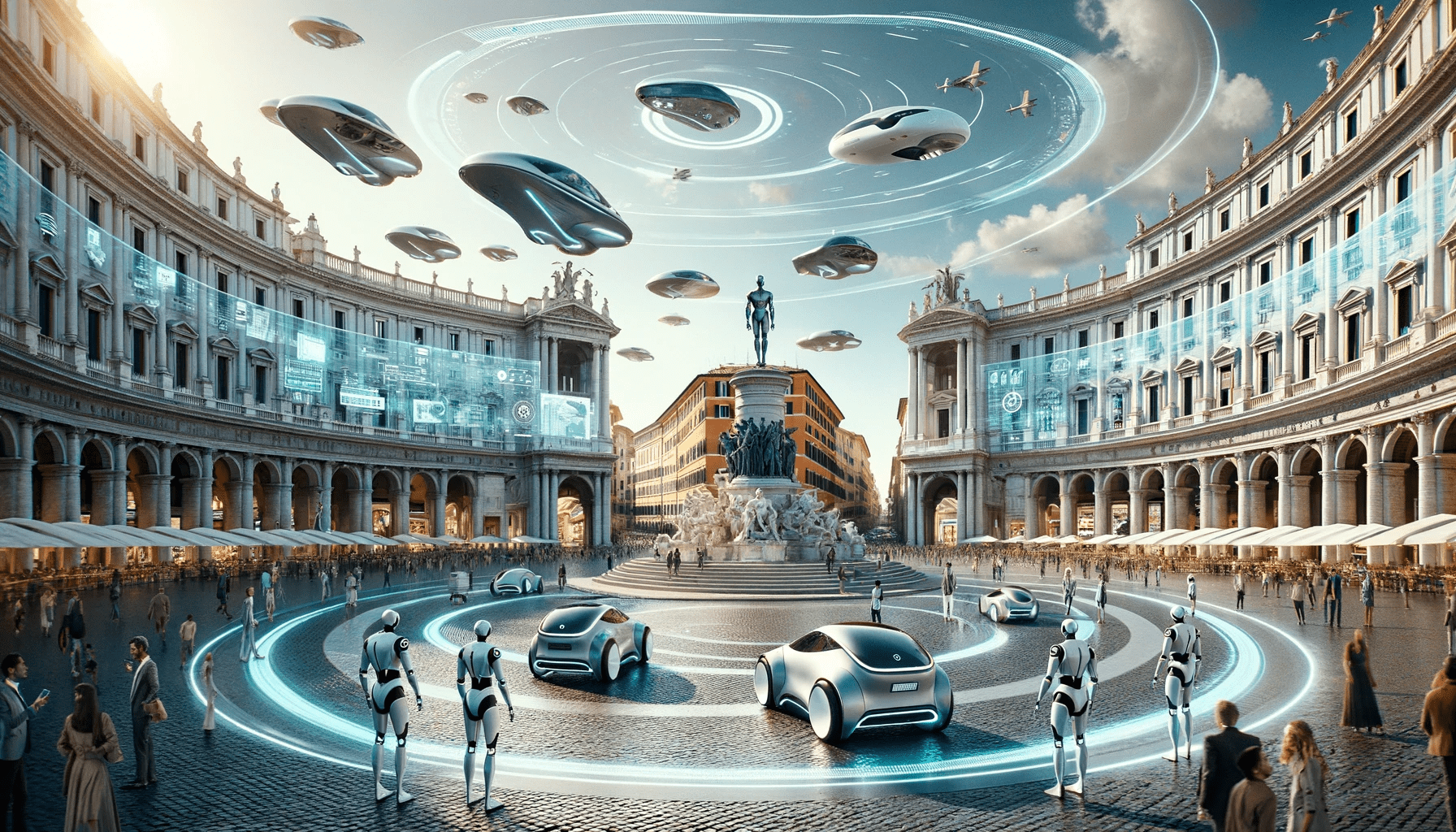
In Rome 2100, the past and the future don’t just coexist; they enrich each other, creating an unparalleled experience for residents and visitors alike.

